The Ultimate Negroni Guide – Everything there is to know about the real king of cocktails!
Okay, I admit that this headline is more than lurid, but while most people would argue that the Martini is the king of cocktails, it takes even more practice to get accustomed with the Negroni’s taste. Yet, when you do, you probably will be magically drawn to it more often than to a Martini! Moreover, it is a bit harder to screw one up, with its equal parts ratio and the three predetermined ingredients. To find out if this was really true, the Augustine-Bar tasting panel sat out on a bitter journey!
Prologue
I guess it does not come as a big surprise that bitter is an acquired taste. As a child we are prone to sweetness and pull a face when we take the first little sip of beer or coffee. Whereas a grownup we get more and more accustomed to bitter ingredients. Of course, there are all sorts of cocktails out there containing bitter ingredients. Yet, the Negroni may just be the most famous of them! Therefore and because it is one of my favourite cocktails, this article is solely dedicated to this bright red drink everyone bartender loves! Of course, it should be said that everything written here is completely and utterly subjective! Also I would be delighted to here what your favourite Negroni recipe looks like.
Glossary
Basically, an Americano plus gin
First let us take a quick look at the history of this glorious gin drink. As the story goes Count Camillo Negroni demanded a stronger version of his favourite drink the Americano. So, the bartender at Hotel Baglioni in Florence, Fosco Scarselli, added gin to the mix of Campari and sweet vermouth instead of the usual soda water. Supposedly, after the drink was an immediate success, the Negroni family built a distillery which produced a readymade version of the cocktail called Antico Negroni. While you can nowadays again grab a bottle of premixed Negroni, as mentioned before with its equal parts of gin, Campari and sweet vermouth the drink actually sounds pretty easy to make. However, there are in fact countless ways to get it right or to screw it up!
Equal parts are a lie!
The truly classic Negroni recipe calls for equal parts of the three ingredients. Yet, depending on preferences and taste some might argue that this results in a fairly unbalanced drink where the Campari suppresses the gin and the sweet vermouth. So, to set some common ground for the other experiments to follow we, a group of five cocktail enthusiasts, started the tasting with different proportions of the Negroni. First we gave the equal parts ratio a try, than we used one with a little more gin and last we gave, what I believed to be Jamie Boudreau’s recipe, a try. Somehow I got confused and instead of ¾ oz Campari I wrote down ¾ oz of sweet vermouth. Nevertheless, even this first round had some surprising results.
|
#1 Proportions |
3/3/3 | 4/3/3 | 4,5/3/2,25 |
| Recipe: |
3 cl Tanqueray London Dry Gin 3 cl Campari 3 cl Carpano Antica Formula Stir – strain – stemless white wine glass without ice; |
4 cl Tanqueray London Dry Gin 3 cl Campari 3 cl Carpano Antica Formula Stir – strain – stemless white wine glass without ice; |
4,5 cl Tanqueray London Dry Gin 3 cl Campari 2,25 cl Carpano Antica Formula Stir – strain – stemless white wine glass without ice; |
| Garnish: | Orange twist; | Orange twist; | Orange twist; |
| Nose: | Oranges, grapefruits, bitterness, hint of wine, spices | Herbs, oranges, less bitter, grapefruits, bitter orange peel, vermouth aroma, dried fruits |
Spices, juniper, citrus fruits, bitterness, more Campari |
| Taste: | Sweet, slightly bitter, Campari, cloves, cloyingly sweet | Juniper, spices, bitterness, fruits, wine, herbs, lighter mouth feel |
Medium sweet almost dry, grapefruits, spices, juniper, bitter notes |
| Aftertaste: | Medium long with medicinal bitterness | Medium long with citrus fruits and a slight bitterness | Rather long with juniper and spices |
| Rating: |
To sum up the results of the first round, we can tell you that the equal parts version was not as unbalanced as we would have expected. However, the 4/3/3 ratio had a better balance between the gin and the other two ingredients. The 4,5/3/2,25 was the driest one of the bunch, but surprisingly the gin did not overpower the drink. Yet, the overall conclusion was to use the 4/3/3 ratio for all of them.
Neat or on the rocks?
Next up, we got to the serving of the Negroni. Actually, there are just two ways you can serve it, neat in a chilled Cocktail or Old-Fashioned glass or over ice cubes. Not to sound pedantic, but those are your only true options. Since, we reckoned a large ice ball would have not this great of an effect compared to the ice cubes and serving it with soda water is just wrong, we disregarded those two options.
|
#2 Serving |
Straight | Over ice |
| Recipe: |
4 cl Tanqueray London Dry Gin 3 cl Campari 3 cl Carpano Antica Formula Stir – strain – stemless white wine glass without ice; |
4 cl Tanqueray London Dry Gin 3 cl Campari 3 cl Carpano Antica Formula Stir – strain – Old-Fashioned glass over three ice cubes; |
| Garnish: | Orange twist; | Orange twist; |
| Nose: | Herbs, oranges, less bitter, grapefruits, bitter orange peel, vermouth aroma, dried fruits |
Oranges, juniper, grapefruit, herbs, wine |
| Taste: | Juniper, spices, bitterness, fruits, wine, herbs, lighter mouth feel |
Bitter, juniper, spices, coriander, hints of grapefruits, whiff of herbs |
| Aftertaste: | Medium long with citrus fruits and a slight bitterness | Rather long with spices |
| Rating: |
|
|
Here we have to take into account that we served all other samples, except the Negroni Swizzle, in Riedel stemless white wine glasses to make the tasting procedure easier. This also means that the “neat” sample was too warm and we tried to take this into account when rating the drinks. Apart from that, both serving variations have their right to exist. Served neat you are able to taste the different flavours of the drink without any further dilution. Moreover, the drink seems a little bit more balanced. Over ice, however the juniper flavour of the gin is more pronounced. The taste also develops, but it also becomes more watered down. In my opinion, you should decide whether to enjoy your Negroni straight or on the rocks depending on the ambient temperature. When it is hot outside you should go for the more refreshing on the rocks version.
Never shake a baby Negroni!
Seriously, who would even consider shaking a Negroni?! Because we didn’t, we just took a look at building the drink in an Old-Fashioned glass, stirring it and throwing it between two shaker parts.
|
#3 Technique |
Building | Stirring | Throwing |
| Recipe: |
4 cl Tanqueray London Dry Gin 3 cl Campari 3 cl Carpano Antica Formula Build – Old-Fashioned glass over ice cubes; |
4 cl Tanqueray London Dry Gin 3 cl Campari 3 cl Carpano Antica Formula Stir – strain – stemless white wine glass without ice; |
4 cl Tanqueray London Dry Gin 3 cl Campari 3 cl Carpano Antica Formula Stir – strain – stemless white wine glass without ice; |
| Garnish: | Orange twist; | Orange twist; | Orange twist; |
| Nose: | Oranges, juniper, grapefruit, herbs, wine | Herbs, oranges, less bitter, grapefruits, bitter orange peel, vermouth aroma, dried fruits | Oranges, bitter oranges, coriander, Campari, wine |
| Taste: | Bitter, juniper, spices, coriander, hints of grapefruits, whiff of herbs | Juniper, spices, bitterness, fruits, wine, herbs, lighter mouth feel | Bitter, coriander, sweet, grapefruits, some herbs |
| Aftertaste: | Rather long with spices | Medium long with citrus fruits and a slight bitterness | Medium long with some bitterness and coriander |
| Rating: |
|
|
|
Again we have to consider the warmer drink when serving Negronis in white wine glasses. Nevertheless, the differences between the three techniques are marginal. I myself could not really make out any contrast between the built and stirred cocktail. I did not tell the other tasters and they did not even notice any difference. When throwing the drink between two parts of a shaker the drink might actually contain a little bit more air bubbles, but apart from that there is no further distinction. One relatively big drawback of throwing a drink is the mess you will make if not being very careful when pouring the liquid from one part of the shaker to the other!
Gin is gin, is gin, is gin!
Behind this cryptic headline there is nothing more than a variation of the gin used in the Negroni. In combination with the following two categories you could mix up an endless amount of alterations here! This is why we first settled on six different gins. All six of them are London Dry Gins, because similar to shaking a Negroni, a New Western Style Gin would be not suited for a Negroni, to say the least.
|
#4.1 Different Gins |
Adnam’s First Rate | Beefeater Crown Jewel | Berry Bros & Rudd No. 3 |
| Recipe: |
4 cl Adnam’s First Rate Gin 3 cl Campari 3 cl Carpano Antica Formula Stir – strain – stemless white wine glass without ice; |
4 cl Beefeater Crown Jewel Gin 3 cl Campari 3 cl Carpano Antica Formula Stir – strain – stemless white wine glass without ice; |
4 cl Berry Bros & Rudd No. 3 Gin 3 cl Campari 3 cl Carpano Antica Formula Stir – strain – stemless white wine glass without ice; |
| Garnish: | Orange twist; | Orange twist; | Orange twist; |
| Nose: | Oranges, grapefruits, spices, Chartreuse herbs, marjoram | Sweet, oranges, grapefruits, whiff of menthol, spices | Oranges, herbs, spices, juniper, grapefruit, bitterness, fruity |
| Taste: | Chartreuse like herbs, spices, slightly bitter, some sweetness, hints of juniper and grapefruits | Juniper, coriander, rather sweet, noticeable menthol notes, a bit unbalanced | Juniper, spices, coriander, some bitterness, fruity, spices |
| Aftertaste: | Medium long with herbs, spices and some bitterness | Long with menthol and bitterness | Rather long with some bitterness |
| Rating: |
|
|
|
#4.2 Different Gins |
Dodd’s | Gilpin’s Extra Dry | Tanqueray |
| Recipe: |
4 cl Dodd’s Gin 3 cl Campari 3 cl Carpano Antica Formula Stir – strain – stemless white wine glass without ice; |
4 cl Gilpin’s Extra Dry Gin 3 cl Campari 3 cl Carpano Antica Formula Stir – strain – stemless white wine glass without ice; |
4 cl Tanqueray London Dry Gin 3 cl Campari 3 cl Carpano Antica Formula Stir – strain – stemless white wine glass without ice; |
| Garnish: | Orange twist; | Orange twist; | Orange twist; |
| Nose: | Grapefruits, bitterness, spices, juniper | Oranges, grapefruit, herbs, some bitterness | Herbs, oranges, less bitter, grapefruits, bitter orange peel, vermouth aroma, dried fruits |
| Taste: | Juniper, spices, coriander, herbs, some bitterness, grapefruit peel, complex and velvety | Fruity, citrus notes, grapefruits, vanilla, mellow and round, rather dry | Juniper, spices, bitterness, fruits, wine, herbs, lighter mouth feel |
| Aftertaste: | Enduring aftertaste with a complex mix of spices and bittersweet aromas | Lengthy aftertaste, spices and herbs | Medium long with citrus fruits and a slight bitterness |
| Rating: |
|
|
|
Compared to the preceding experiments this one shows a clear trend: All, but one taster agreed that the regular Tanqueray Gin makes a decent Negroni. The Adnam’s resulted in a complex and very herbal drink, which managed to win over all participants. While the Beefeater Crown Jewel, which is great when pared with mint, resulted in a somehow unbalanced drink. The No. 3 while delivering a good result, gave the Negroni an powerful citrus note, which might actually work better in a Martini cocktail. The second winner of this round of the tasting was the Dodd’s Gin. The Negroni made with it was nor the driest one, neither the most juniper forward, but it managed to be every bit as complex as the one made with Adnam’s. The difference between the two was, that the Adnam’s stressed its herbal Chartreuse like flavour, while the Dodd’s placed a bigger emphasis on spices. Similar to the No. 3 the Gilpin’s also showed more citurs notes, while having a drier mouth feel and aftertaste. After all, this means that depending on your preference you will be best advised to use Adnam’s or Dodd’s in your Negroni.
Give me some gunpowder!
Of course, the not so faint hearted amongst you would like to know how a powerful Navy Strength gin would behave when being mixed in a Negroni. This is why we also tried two of them. – Sorry we were not able to procure a third one. Nevertheless, with Hayman’s Royal Dock and Sipsmith V.J.O.P. we had two more than relevant representatives of their category on hand.
|
#5 Navy Strength Gin |
Hayman’s Royal Dock | Sipsmith V.J.O.P. |
| Recipe: |
4 cl Hayman’s Royal Dock Gin 3 cl Campari 3 cl Carpano Antica Formula Stir – strain – stemless white wine glass without ice; |
4 cl Sipsmith V.J.O.P. Gin 3 cl Campari 3 cl Carpano Antica Formula Stir – strain – stemless white wine glass without ice; |
| Garnish: | Orange twist; | Orange twist; |
| Nose: | Bitter, grapefruit, wine | Grapefruits, bitters, herbs, juniper |
| Taste: | Sweet, spices, juniper, noticeable bitterness | Bitter, menthol, pine nuts, gentian, coriander |
| Aftertaste: | Medium long, very sweet and bitter | Very long with bittersweet herbs |
| Rating: |
|
 |
Surprisingly enough, the Hayman’s Royal Dock resulted in an almost balanced and a little bit too sweet drink. The gin was of course noticeable, but the difference between it and a regular one made with Tanqueray were not that big. With the Sipsmith V.J.O.P. things were a little bit different… It clearly dominated the drink with a strong herbal flavour. Especially, coriander, cardamom and also some piny juniper flavours suppressed the other two ingredients, but still the cocktail was rather interesting.
All that glisters is not Antica Formula!
While you will find a lot of people out there arguing that Carpano’s Antica Formula does not make a great Negroni, it probably is used the most in high quality Cocktail bars for this drink. To find out if it really does overpower the drink we compared it to its main competitor Cocchi Vermouth di Torino and the underdog Belsazar Red.
|
#6 Different Vermouths |
Belsazar Red | Carpano Antica Formula | Cocchi Vermouth di Torino |
| Recipe: |
4 cl Tanqueray London Dry Gin 3 cl Campari 3 cl Belsazar Red Stir – strain – stemless white wine glass without ice; |
4 cl Tanqueray London Dry Gin 3 cl Campari 3 cl Carpano Antica Formula Stir – strain – stemless white wine glass without ice; |
4 cl Tanqueray London Dry Gin 3 cl Campari 3 cl Cocchi Vermouth di Torino Stir – strain – stemless white wine glass without ice; |
| Garnish: | Orange twist; | Orange twist; | Orange twist; |
| Nose: | Fruity, Rotbäckchen juice, some grapefruit notes, hints of wormwood, citrus fruits, spices | Herbs, oranges, less bitter, grapefruits, bitter orange peel, vermouth aroma, dried fruits | Spices, cloves, fruits, some bitterness |
| Taste: | Fruity, pears, red berries, some bitterness, juniper, spices, less sweet, mellow | Juniper, spices, bitterness, fruits, wine, herbs, lighter mouth feel | Grapefruit, bitterness, some fruitiness, spices, orange peel |
| Aftertaste: | Normal aftertaste, red berries | Medium long with citrus fruits and a slight bitterness | Relatively long, some spices |
| Rating: |
 |
 |
 |
Maybe we are just that used to Antica Formula, but none of the other two vermouths could deliver a better result. On the contrary the Cocchi was not really able to stand up to the powerful Campari. The cocktail mixed with it was lacking a certain flavour element in the aftertaste. The Belsazar Red is a great vermouth especially in Rum Manhattans and such, but in the Negroni it brought too much fruitiness to the mix and the drink was very different from what we expected a Negroni to be.
How about some extra bitterness?
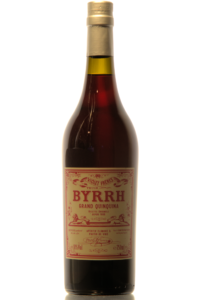
While we are on the topic of vermouth: Since, some people reckon that Punt E Mes makes a great Negroni, we also tried three Amaro / Vermouth hybrids in the recipe. Actually, those fortified wines are not classic sweet vermouths. Therefore, it is disputable if a drink mixed with them is still a real Negroni. As you can see, this means that with our little experiment, we are also able to define the borders of what can be called a Negroni.
|
#7 With Amaro Vermouths |
Byrrh Grand Quinquina | Cocchi Vermouth Amaro | Punt E Mes |
| Recipe: |
4 cl Tanqueray London Dry Gin 3 cl Campari 3 cl Byrrh Grand Quinquina Stir – strain – stemless white wine glass without ice; |
4 cl Tanqueray London Dry Gin 3 cl Campari 3 cl Cocchi Vermouth Amaro Stir – strain – stemless white wine glass without ice; |
4 cl Tanqueray London Dry Gin 3 cl Campari 3 cl Punt E Mes Stir – strain – stemless white wine glass without ice; |
| Garnish: | Orange twist; | Orange twist; | Orange twist; |
| Nose: | Bittersweet, fruity, cherries, red berries, raspberry efflorescent powder | Bitter, herbs, slight medicinal notes, oranges | Fruity, herbs, some bitterness, dried fruits, cherries, vanilla |
| Taste: | Red fruits with moderate bitterness, strawberries, mellow, citrus notes, hint of vanilla | Sweet, herbs, wormwood, strong bitterness | Sweet, noticeable bitterness, herbs, getting drier, plums, vanilla, spices |
| Aftertaste: | Medium long with cherries and a whiff of bitterness | Moderately long with bitterness, wormwood and a slight sweetness | Almost short, some bitterness and fruits |
| Rating: |  |
 |
|
The funny thing about using an Amaro Vermouth in this is that the resulting drink differs from the original quite a bit. The most extreme example of this is the Byrrh: Its powerful red fruit notes are directly transferred to the Negroni. Now it is hard to still call this a Negroni even though it is damn delicate! When using the Cocchi Vermouth Amaro the result is more traditional. Still, it is dominated by a strong wormwood taste which can be off-putting to some people. Moreover, I was under the impression that it was even more bitter than an original Negroni. With Punt E Mes the drink receives more vanilla notes than with any other style of vermouth. While this might be the excellent choice for vanilla lovers we decided that it was too far away from the regular cocktail. Still, with its unbeatable price tag it might just be the one with the best price / performance ratio of all fortified wines you can use in a Negroni.
Is this still a Negroni?
Well, actually if you replace the Campari with any other bitter liqueur you will end up with another drink. No denying it! Yet, the result might actually be a better drink! This is why, we also gave Mondino and Gran Classico a try.
There were great differences in taste here! None of the other two liqueurs were as bitter and powerful as the Campari. Yet, the rating does not reflect this, because we kind of looked at them as being distinct and individual drinks. The Mondino showed a more pleasing flavour profile, while the Gran Classico had a more natural taste with a lot of gentian and bitter herbal notes. We all agreed that, while swapping out the Campari for an other bitter liqueur might seem like a good idea, there is really no replacing Campari if you still want to call your drink a Negroni!
Is this still a Negroni Part 2? (Using different white spirits)
Now, while you easily can mix an infinite amount of drinks using only gin, a bitter liqueur and vermouth, there is also a huge number of Negroni variations using other spirits. To see if they actually can be seen as relatives to the Negroni we also tried some of them. Let’s begin with replacing the gin with other white spirits.
|
#9 White Spirits |
Agavioni | Genever Garner | Oaxacan Negroni |
| Recipe: |
4 cl Calle 23 Blanco Tequila 3 cl Campari 3 cl Carpano Antica Formula Stir – strain – stemless white wine glass without ice; |
4 cl Rutte N Zn Paradijswin Genever 3 cl Campari 3 cl Carpano Antica Formula Stir – strain – stemless white wine glass without ice; |
4 cl Piedre Almas Espadin Mezcal 3 cl Campari 3 cl Carpano Antica Formula Stir – strain – stemless white wine glass without ice; |
| Garnish: | Lemon twist; | Lemon twist; | Lemon twist; |
| Nose: | Lemon, agave, bitterness, grapefruits | Fruity, malt, slightly floral, grapefruit, citrus notes | Lemon, smoke, burned rubber tire, bitterness, umami |
| Taste: | Fruity, bitterness, grapefruits, agave, mellow, red berries | Citrus, malt, slightly sweet, some bitterness, lemons | Smoky, charcoal, some bitterness, grapefruits |
| Aftertaste: | Medium long with agave and a slight fruitiness | Rather long with malt and a noticeable bitterness | Very long, smoke, umami, burned polymers and bitterness |
| Rating: |
|
|
|
While all three variations were good drinks, the Agavioni did not strike us as that special. Sure it was very different and refreshing, but also had some similarities to the original Negroni. The Genever Garner was the most similar to the regular drink out of the three. Yet, it had more pronounced citrus and malt notes. Yet, things were very different with the Oaxacan Negroni! In direct comparison with the standard Negroni you can hardly see the relation! Apart from that, the smokiness and the burned rubber taste manage to set some counterbalance to the bittersweet Campari and vermouth notes. This means, if you are a Negroni-lover, you definitely should give this Mezcal version a try!
This is definitely not a Negroni! (Using different dark spirits)
Well, I stand by this statement! When you start using a dark spirit in a Negroni-style cocktail it looses its right to call itself a Negroni! Following that logic it is also wrong to call the Boulevardier a cousin of the Negroni which Imbibe does in this recipe. Leaving the name aside, we will see, that it is still a great idea to mix dark spirits with Campari and vermouth!
|
#10 Dark Spirits |
Boulevardier | Kingston Negroni | Old Pal |
| Recipe: |
4,5 cl Elijah Craig Bourbon 3 cl Campari 3 cl Carpano Antica Formula Stir – strain – stemless white wine glass without ice; |
3 cl Smith & Cross Jamaican Rum 3 cl Campari 3 cl Carpano Antica Formula Stir – strain – stemless white wine glass without ice; |
4,5 cl Rittenhouse Bottled In Bond Rye 2,25 cl Campari 2,25 cl Belsazar Dry Vermouth Stir – strain – stemless white wine glass without ice; |
| Garnish: | Orange twist; | Orange twist; | Orange twist; |
| Nose: | Grassy, whisky, caramel, vanilla, wine aroma, oranges, cherries | Ester notes, overripe bananas, fruity, raspberries, herbs | Lemon, grassy, rye, some bitterness, vegetal notes |
| Taste: | Sweet, corn, slight bitterness, fresh cut grass, vanilla, caramel | Vanilla, fruity notes, ester, caramel, pronounced sweetness, medicinal notes | Grassy, lemon, some bitterness, fruits, grapefruits, mint |
| Aftertaste: | Long with vanilla and a slight sweetness | Rather long with ester notes, vanilla and a whiff of bitterness | Long with intense grass notes |
| Rating: |
|
|
|
Let’s talk about this part of the tasting in ascending order: First, the Old Pal, despite having rye whiskey as a base was not convincing in taste. I guess that maybe the Belsazar Dry Vermouth was not dry enough and too fruity for the drink. It came of as being unbalanced with the grasy notes of the rye dominating the drink. Second, the ester notes of the Kingstom Negroni, similar to the Oaxacan Negroni, gave the drink an additional level of complexity, which was very nice indeed. Third, the Boulevardier was everybody’s darling! Its rich taste and complexity together with just the right amount of sweetness deserve the highest rating of this comparison! Now I can not help myself but wonder why I neglected it for so long…
One for the ladies, or Summer, or gentlemen with a lighter palate…
If it is over thirty degrees centigrade outside it is hard to ignore the voice telling you to not drink alcohol. Whether it might be your inner one, or in fact your wife (or husband), there is a solution for the times you just cannot ignore the need for a Negroni-style concoction! This is why we also sampled three light Negroni versions.
|
#11 Light Negroni Variations |
Contessa Negroni | Negroni Sbagliato | Negroni Swizzle |
| Recipe: |
4 cl Tanqueray London Dry Gin 3 cl Aperol 3 cl Carpano Antica Formula Stir – strain – stemless white wine glass without ice; |
4,5 cl Campari 4,5 cl Cocchi Vermouth Di Torino 4,5 cl Cocchi Spumante Stir – strain – stemless white wine glass without ice; |
4,5 cl Tanqueray London Dry Gin 4,5 cl Campari 1,5 cl Carpano Antica Formula Vermouth Swizzle in Highball glass over crushed ice – top off with crushed ice; |
| Garnish: | Orange twist; | Orange twist; | Orange twist; |
| Nose: | Oranges, herbs, spices, wine | Spumante notes, wine, bitter, herbs, slight sweetness | Oranges, whiff of Campari |
| Taste: | Sweet, oranges, herbs, slight bitterness | Sparkling wine flavours, noticeable carbonation, sweet, Glera grapes, dried fruits, bitter | Grapefruits, slight salinity, bitterness, herbs, juniper, hint of carbonation, bitter oranges |
| Aftertaste: | Rather short with pronounced sweetness and some herbs | Enduring, with a nice balance of bitter and sweet flavours | Long with bitter Campari notes |
| Rating: |
|
|
|
Considering those variations are made for a hot Summer’s day or to get used to the bitter taste, all three did a rather good job. Yet, the Contessa Negroni with Aperol instead of Campari lacked a bit of complexity and power as well as being a little too sweet. In its defence, I have to tell you that I myself used this recipe to get acquainted with the bitterness of a Negroni. My next step, the Negroni Swizzle is probably the best drink to mask the alcohol when the sun is really burning down. Not that I would really consider drinking on such an occasion, I’m just saying… So, the cocktail which received the highest praise was the Negroni Sbagliato, because it is reasonably complex, while at the same time being light and refreshing. The carbonation of the Prosecco is great to add some action to the otherwise still life that is a Negroni.
Not even trying to be an Negroni! (Heavy variations)
On the one hand, I am not saying that we exhausted the Negroni category a bit here, but on the other hand we did mix up 23 versions of it so far… Yet, our journey is far from over! Know we will get to drinks which do not even call themselves Negronis anymore! Well, actually the White Negroni does carry the Negroni name, but because two ingredients are completely different I decided to include it here.
|
#12 Heavy Negroni Variations |
Harajuku Cocktail | Trident | White Negroni |
| Recipe: |
3 cl Hibiki Japanese Harmony Whisky 3 cl Gran Classico 3 cl Byrrh Grand Quinquina 2 Dashes The Bitter Truth Xocolatl Bitters Stir – strain – stemless white wine glass without ice; |
3 cl Dreiling Aquavitae Aquavit 3 cl Cynar 3 cl Ferrnando De Castilla Fino Sherry 2 Dashes The Bitter Truth Peach Bitters Stir – strain – stemless white wine glass without ice; |
6 cl Plymouth Gin 3 cl Suze Saveur d’Autrefois 3 cl Lillet Blanc Stir – strain – stemless white wine glass without ice; |
| Garnish: | Orange twist; | Lemon twist; | Lemon twist; |
| Nose: | Cherries, wine, citrus peel, herbs | Lemons, sweetness, herbs, sherry, caraway | Oranges, lemon, bitter, juniper |
| Taste: | Fruits, cherries, noticeable bitterness, vanilla, citrus notes, red berries, viscous mouth feel, Yuzu notes, pink grapefruit | Bitterness, sherry notes, lemon, Cynar, bitter oranges, caraway, caramel | Bitter oranges, juniper, dry, some medicinal notes, menthol |
| Aftertaste: | Rather long with lemon and malt notes | Long with caraway, bitter spices and wine notes | Medium long with gentian and a whiff of sweetness |
| Rating: |
|
|
|
Sam Ross’s Harajuku Cocktail, despite being completely different from the usual Negroni, managed to instantly win everyone over! Its perfectly balanced taste in combination with chocolate notes, a certain citrus aroma and a great cherry note from the Byrrh gave it an unbelievable depth. Again you definitely have to try this, if you are into Negronis! Equally complex, yet again very different is Robert Hess’s Trident. Here it is of upmost importance to use a high quality aquavit and sherry. If you do, you will be rewarded by a complex, bitter and Nordic flavour profile. Only the White Negroni could not live up to the expectations. It was unbalanced with strong menthol and gin notes. It was okay, but nothing more. I personally was disappointed by this, because I had a White Negroni, made with Tanqueray at Bar Gabanyi before and I simply was blown away by its complex gentian-forward taste.
Drink more Boulevardiers! (Boulevardier Variations)
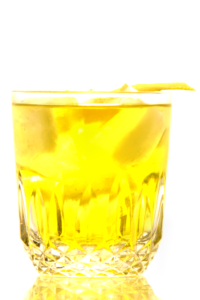
While we were at it, we thought it would be a great idea to taste some Boulevardier variations, too. Though, there probably are as many versions out there as with the Negroni, we settled for only three.
|
#13 Boulevardier Variations |
Left Hand Cocktail | Stagger Lee Boulevardier | White Boulevardier |
| Recipe: |
4,5 cl Elijah Craig Bourbon 2,25 cl Campari 2,25 cl Carpano Antica Formula 2 Dashes The Bitter Truth Xocolatl Bitters Stir – strain – stemless white wine glass without ice; |
3 cl Elijah Craig Bourbon 3 cl Campari 3 cl Cynar Stir – strain – stemless white wine glass without ice; |
4,5 cl Koval Unaged Rye 3 cl Suze Saveur d’Autrefois 3 cl Cocchi Americano Stir – strain – stemless white wine glass without ice; |
| Garnish: | Orange twist; | Orange twist; | Lemon twist; |
| Nose: | Chocolate, wine, grass, cereals, vanilla and a hint of bitterness | Bitter, Cynar notes, whiskey, slight sweetness, spices and herbs | Oranges, slightly bitter, floral, sweet |
| Taste: | Bitter chocolate notes, red wine, sweet Bourbon notes, hint of grass and spices, caramel | Vanilla, grassy, prominent, but well integrated bitterness, interesting wine notes, grapefruit and typical Cynar taste | Fruity, oranges, grapefruit, slightly bitter, hint of chocolate, gentian |
| Aftertaste: | Long with spicy chocolate and vanilla | Very long with pronounced bitterness, herbs and spices and a hint of sweet chocolate | Rather long with sweet citrus fruits and a slight bitterness |
| Rating: |
|
|
|
The Left Hand Cocktail, like the Harajuku also invented by Sam Ross, was of course very similar to the Boulevardier with additional cacao and chocolate notes. However, those extra flavours kind of distracted from the otherwise perfectly balanced drink and this is why we gave it a slightly lower rating. Contrary to this, the Stagger Lee Boulevardier received the highest possible rating. Everybody agreed that the Cynar’s additional bitterness and herbal notes combined with the usual Boulevardier flavours resulted in an amazing drink. Similarly good, but not so complex was my take on a White Boulevardier. I have to admit that the idea for this drink was inspired by a cocktail with the same name from the Les Fleurs Du Mal in Munich. Yet, I used an unaged white dog instead of regular bourbon.
In conclusion, exhausting as all those tastings were it was also very interesting to spent so much time on one cocktail. The most important thing I will take away from this is that while the Negroni leaves a lot of room for experiments, there are a few common factors you have to consider when you want the drink to keep its true identity! You will need a dry, juniper forward London Dry Gin, a high quality sweet vermouth and of course Campari. Although over bitter liqueurs can be fun for a change, there is no real substitute for it. When playing around with different ratios, it is really up to you how much sweetness and juniper taste you want your Negroni to have, we all seemed to agree that the 4/3/3 cl ratio works best. Last, let me just say a few words on using different spirits: Again it is a fun way to bring some change to your Negroni game, but only two versions stood out from the rest. The Oaxacan and the Kingston Negroni both had complex and interesting notes while bearing close stylistic similarities to the original. Of course, the Boulevardier and its alternatives are remarkable cocktails, but they should be seen as individual drinks! Bellow you will find a short overview of the different ratings. The lion markes the price-performance winner.

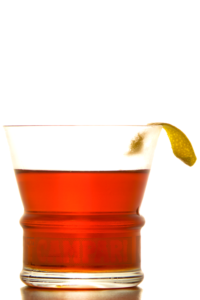
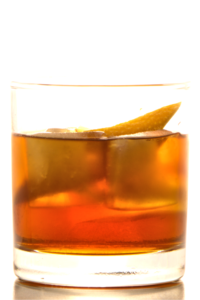

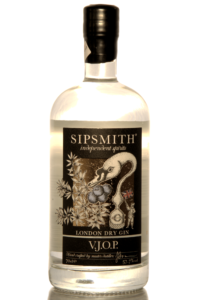
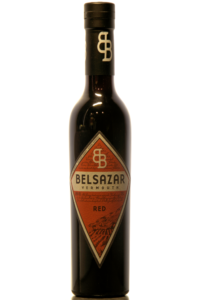
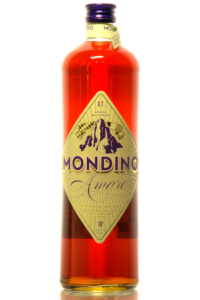
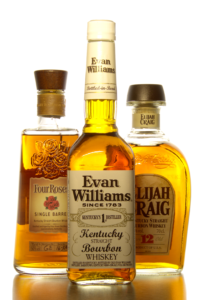
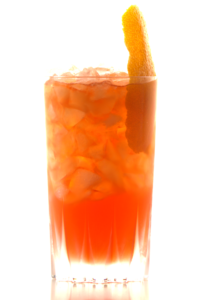
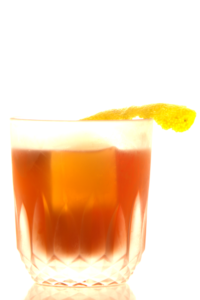
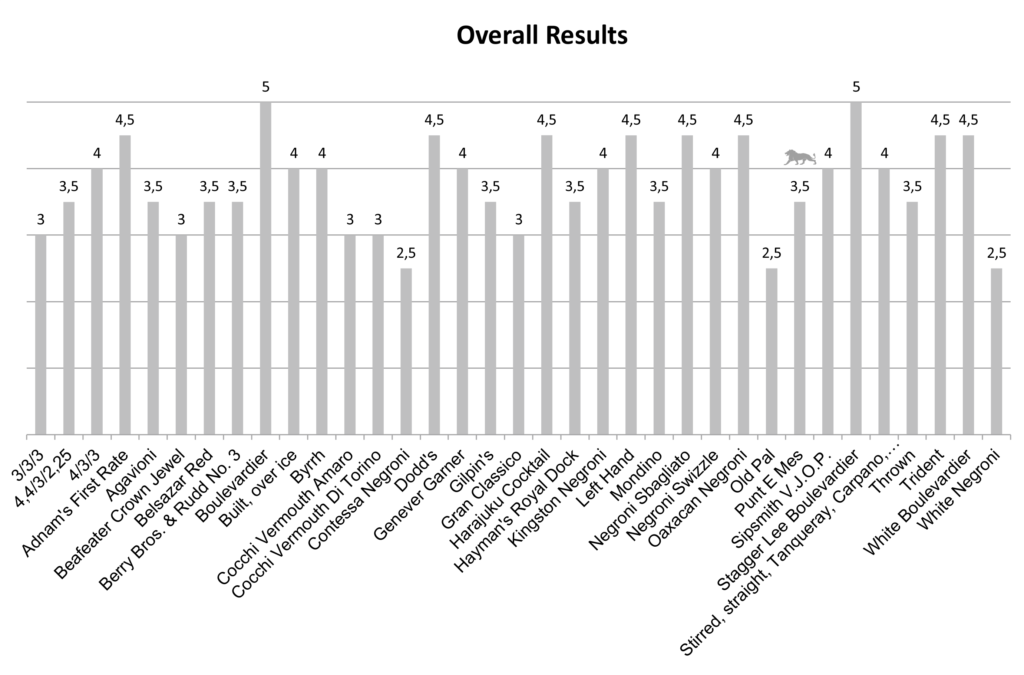
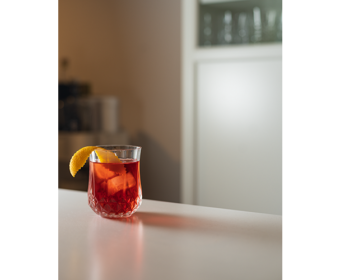
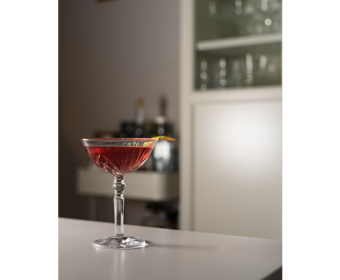
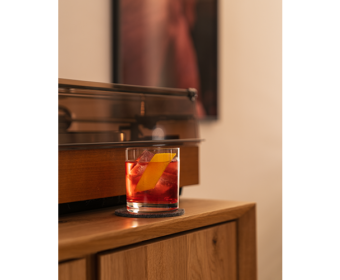
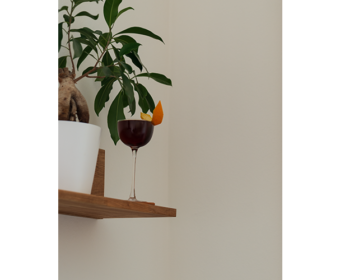
Amazing article, in depth and width. Now, with Negroni Week coming up, doubly valuable. Just one thing: In Firefox, the layout of some of the tables is broken.
Thank you very much! I will try to fix the tables as soon as possible!
Very motivating article. But I have to notice a drawback on your process. You started to figure out the relations of the ingrediants with a fixed set of ingrdiants. After it you used that same relation to all substituted variants of the negroni. I am pretty sure the results will differ if you balance each drink combination on its own.
Thank you for the inspiring recepies,
Angelo
Hi Angelo,
thank you for your praise and your suggestions. Your absolutely right, but when doing such extensive tastings you have to settle for some common ground. This is why we decided to not balance the drinks individually. Otherwise it probably would be hard to compare the recipes.
With best regards,
Matthew
A great article about one
of my favourite Cocktails. Thank you!
Hi Dadid,
thank you! I’m glad you like it!
With best regards,
Matthew
Really enjoyed reading your in-depth Negroni analysis 🙂
Here is one of our favorite Negroni mixes:
2,5 cl Dodd’s Gin
1,5 cl Gran Classico Bitter
2 cl Carpano Antica Formula
Stir in mixing glas with lots of ice and drink in tumbler with fresh ice with an orange zest.
Hi,
thanks. I will make sure to try your recipe!
With best regards,
Matthew
Strictly speaking, the Rutte Paradijswin is not a “white” spirit…
Hello Zentorno,
of course you are absolutely right! However, I prefer the Rutte over the Bols Genever and on top of that it did not seem to fit with the dark spirits either.
With best regards,
Matthew
Wow, that’s a nice article about one of my alltime-favorites!
Thank you Sepo!